
Are you ready for the adventure of a lifetime? Climbing Mount Rinjani, Indonesia’s second-highest volcano, is no walk in the park. But with our comprehensive guide, you’ll be well-equipped to conquer this majestic mountain and experience the breathtaking views from its summit. Strap on your hiking boots and let’s dive into everything you need to know about climbing Mount Rinjani in 2023!
#1: The Mountain’s Majesty

Nestled in the heart of Lombok, Mount Rinjani towers at an impressive 3,726 meters (12,224 feet). This mighty volcano is not only an awe-inspiring sight but also a sacred site for the local Sasak people and Hindu community. The mountain’s beauty is undeniable, with its emerald crater lake, Segara Anak, and the smaller volcanic cone, Gunung Baru Jari, adding to its allure.
#2: When to Go
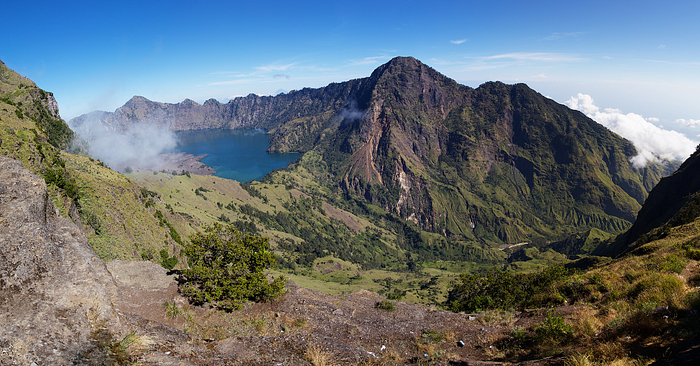
The Rinjani trekking season typically runs from April to early December, with the mountain closed during the rainy season (January to March). The best time to climb Mount Rinjani is between May and September, as the weather is generally dry and more predictable. Keep in mind that June to August is the peak season, so expect more climbers and slightly higher tour prices during this time.
#3: Choosing the Right Trek
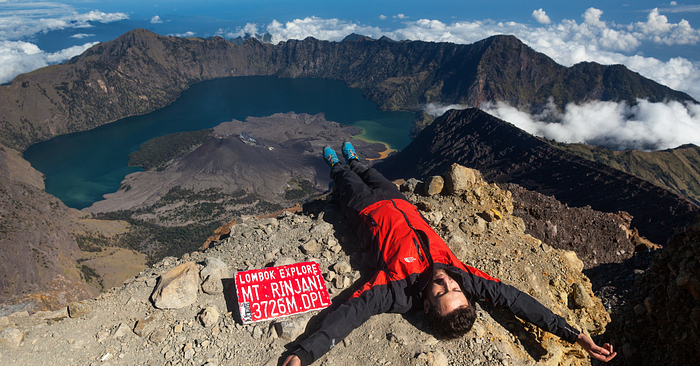
Mount Rinjani offers several trekking routes, each with its unique challenges and rewards. The most popular routes include:
- The 2-Day, 1-Night Summit Trek: Perfect for experienced trekkers with limited time, this challenging route takes you straight to the summit and back. However, it doesn’t include a visit to the crater lake.
- The 3-Day, 2-Night Crater Rim and Lake Trek: A great option for those seeking a more leisurely pace, this trek takes you to the crater rim and the stunning Segara Anak Lake but doesn’t include the summit.
- The 4-Day, 3-Night Summit, and Lake Trek: The ultimate Rinjani experience, this trek covers the summit, the crater rim, and the lake. It’s ideal for those who want to take their time and enjoy all the highlights that Mount Rinjani has to offer.
#4: Choosing the Right Tour Operator
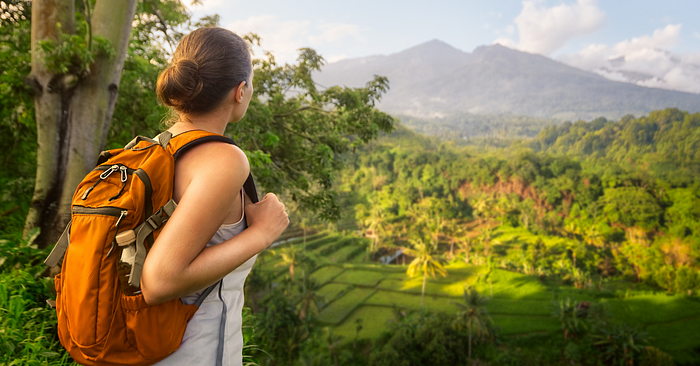
A guided trek is mandatory for climbing Mount Rinjani, and it’s crucial to choose a reputable and eco-conscious tour operator. Look for operators who prioritize the well-being of their porters, practice Leave No Trace principles, and have a proven track record of safety and customer satisfaction. Don’t forget to read reviews and compare packages before making your decision. Rinjani Dawn Adventures is a reputable trekking company based in Senaru, run by local manager, Saefudin Zohri. They were named LTG Adventure Tour Operator of the Year (Indonesia) in 2020, and continue to get consistent 5-star reviews. Although fairly new, Lost on Lombok also excels when it comes to customer experience. Avoid booking through Viator or Apps like Get Your Guide as these take a significant cut from the guiding company (so they cut costs in other ways). Budget packages, as sold locally at “Tourist Information” booths generally represent unlicensed and irresponsible operators who often leave trash on the mountain.
#5: Training and Preparation

Climbing Mount Rinjani is a physically demanding endeavor, and it’s essential to be well-prepared before embarking on your journey. In the months leading up to your trek, focus on improving your cardiovascular fitness, strength, and endurance. Incorporate regular hiking, hill walking, and strength training into your routine to ensure you’re in top shape for the challenge ahead.
#6: Packing for the Trek

Packing the right gear is crucial for a successful Rinjani trek. Essential items to bring include:
- A comfortable backpack (30–40 liters)
- Sturdy hiking boots with good ankle support
- Lightweight, moisture-wicking clothing (including layers for the summit)
- A warm, waterproof jacket and trousers
- A hat, sunglasses, and sunscreen
- A reusable water bottle and purification tablets
- A headlamp with extra batteries
- A basic first aid kit and personal medications
- High-energy snacks (e.g., nuts, energy bars, dried fruit)
- Trekking poles (optional but highly recommended)
- Toiletries, including biodegradable soap and a quick-dry towel
- A quality camera to capture unforgettable views
Keep in mind that your tour operator will typically provide camping equipment, including tents, sleeping bags, and sleeping mats, so check with them before packing these items.
#7: The Trekking Experience
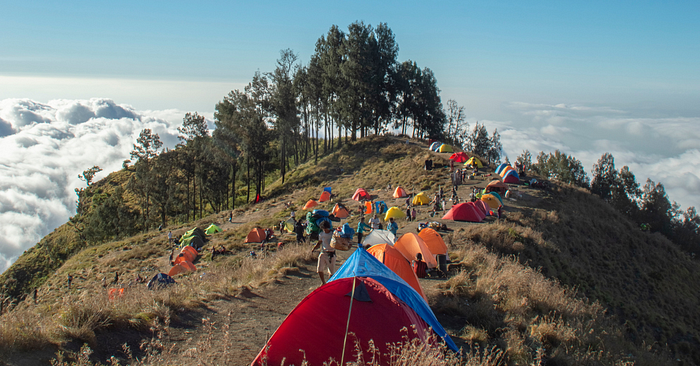
Climbing Mount Rinjani is a challenging yet rewarding adventure, with steep trails, rocky terrain, and high altitudes. Expect to trek for 6–10 hours per day, depending on your chosen route. The final ascent to the summit is particularly grueling, often starting around 2 am to reach the top in time for sunrise. But trust us, the breathtaking views and sense of accomplishment make it all worthwhile!
During your trek, you’ll be accompanied by a knowledgeable guide and a team of hardworking porters who will carry the majority of the equipment, set up camp, and prepare meals. While tipping is not mandatory, it’s customary to show your appreciation for their efforts with a gratuity at the end of the trek.
#8: Health and Safety
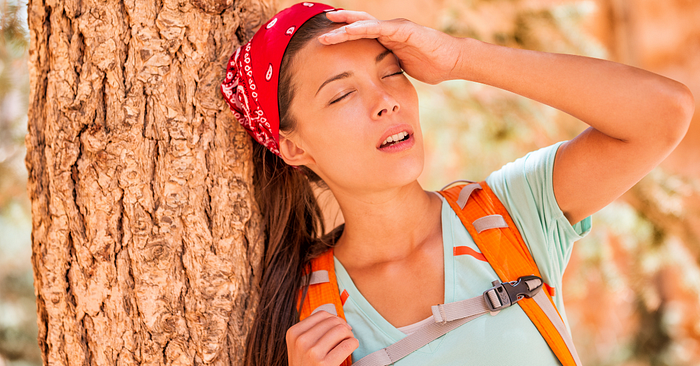
Altitude sickness is a common concern when climbing Mount Rinjani. Symptoms include headache, nausea, dizziness, and shortness of breath. To minimize your risk, ensure you’re well-rested, hydrated, and well-nourished throughout the trek. Acclimatize slowly, and don’t hesitate to communicate any symptoms to your guide.
Additionally, make sure you’re up-to-date on any necessary vaccinations and bring along any personal medications you may need. Consult your doctor or a travel medicine specialist for advice tailored to your specific needs.
#9: Environmental Stewardship

Preserving Mount Rinjani’s pristine environment is a shared responsibility. When trekking, practice Leave No Trace principles, including packing out all trash, minimizing campfire impacts, and respecting wildlife. Choose eco-friendly trekking companies that prioritize sustainability, and consider participating in clean-up initiatives to help maintain the mountain’s beauty for future generations.
#10: Post-Trek Relaxation

After conquering Mount Rinjani, you’ve earned some well-deserved rest and relaxation. Lombok offers plenty of options to unwind, from soaking in the natural hot springs near the mountain to lounging on the island’s idyllic beaches. Don’t forget to explore Lombok’s rich culture, sample its delectable cuisine, and relish in the memories of your incredible Rinjani adventure.
In conclusion, climbing Mount Rinjani is an unforgettable experience that requires careful planning, preparation, and determination. Our ultimate guide is designed to equip you with the knowledge and confidence you need to conquer this awe-inspiring volcano and create memories that will last a lifetime. So, gather your courage, pack your bags, and get ready for the adventure of a lifetime on the majestic Mount Rinjani!























